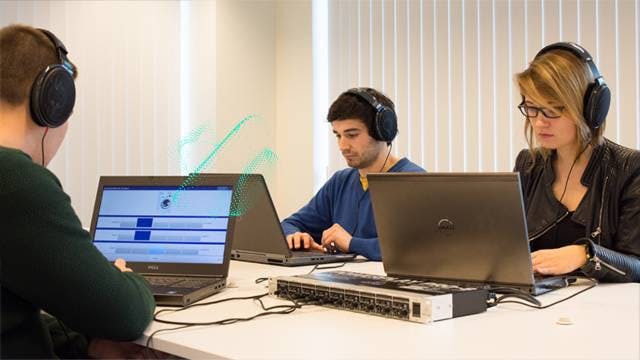产品声音是影响客户决定是否购买它的一项重要因素。确保产品声音能够正确体现品牌价值不仅是一项工程挑战,其中还涉及人类心理学。
人们根据自己的个人喜好评价产品的声音。例如,听到真空吸尘器产品的声音后,同一噪声工程团队的两位同事可能会对声音是否让人烦躁给出不同答案。该问题导致很难开发出声音合适的产品。
听审测试是一种为了在产品设计流程中制定正确决策而对由一组倾听者(公司专家、潜在客户、管理层)给出的主观印象进行客观评估的方法。
在此网络研讨会中,工程师和产品设计师们将了解以下内容:
- 准备声音样本
- 选择听审员数量
- 设计能够满足产品特定需求的听审测试
- 解释结果
如何在实践中操作?
在听审测试中播放一组声音,可以采用对比测试方式,例如将声音按对分组。随后,询问听审员是喜欢声音 A 还是声音 B。在更为深入的调查中,可以将声音分类为“强烈”、“稳定”或“悦耳”。随后,要求听审员按照建议的类别对声音评级。
可以将最终的喜好评级或关键的因素关联到客观的测量标准,例如测试原型变体或声音质量指标。
谁可以从听审测试受益?
实际上,任何可发出声音的物品都可以执行此类测试。此类用例在汽车行业中较为常见,用于评估发动机声音或是客户造成的声音(关车门、开关电动车窗等)以确定声音是否适宜并加以改进。除汽车行业外,在其他产品中调查用户对声音的主观喜好也极为常见,例如卡车制冷设备、洗碗机、咖啡机和割草机等。
形成声音质量闭环
产品声音质量验证流程由听审测试完成。将声音质量指标等客观测量标准与听审员的主观意见相关联后,能更轻松地生成和加强产品的声音,并最终打造出深获客户认可的品牌。
主讲嘉宾简介

Siemens Digital Industries Software
阿格涅斯卡·奥塔尔兹沃卡 (Agnieszka Oltarzewska)
声学产品经理
阿格涅斯卡·奥塔尔兹沃卡是 Siemens Digital Industries Software 的声学产品经理。她拥有波兰弗罗茨瓦夫技术大学声学专业的理学硕士学位。她当前定居在比利时鲁汶。她主要负责声音质量工程和声学材料特性领域的跨行业解决方案。
